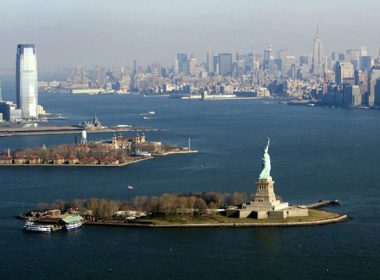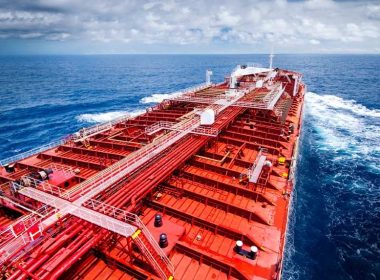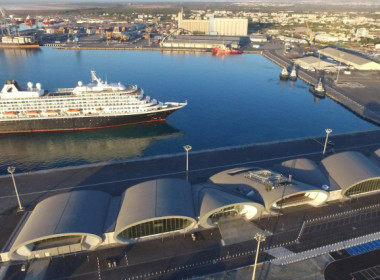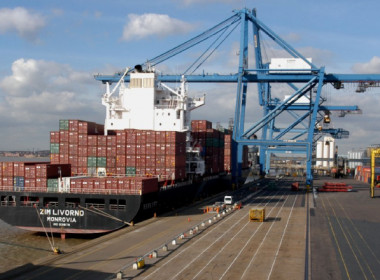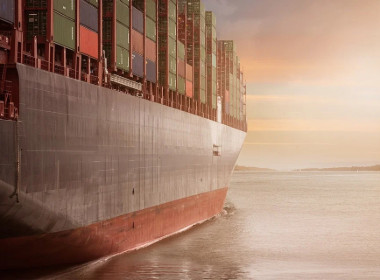GEAR | Capital Link concludes 18th annual International Shipping Forum in New York

Capital Link’s 18th Annual International Shipping Forum took place March 11, 2024, at the Metropolitan Club in New York City. The event was held in partnership with Citi and in cooperation with NYSE and Nasdaq.
Held in New York City every year, the Annual International Shipping Forum is known for its large attendance by investors, shipowners, and financiers. It is a meeting place for C-level executives from the maritime industry and the finance and investment communities involved with shipping.
The event examined the macroeconomic issues that are impacting the international shipping markets today. The forum featured a comprehensive review and outlook of the various shipping markets, made more relevant by the release of companies’ annual results.
The event also featured 1×1 meetings between investors and executives from shipping companies. Some highlights of the event are discussed here.
Product tankers sector panel
Mr Robert Bugbee, President of Scorpio Tankers, said that although there are outflows of money pouring out for the renewable funds over the last 12 months, there is also lack of questions concerning renewables. Although investors paid attention to the ESG factors during the pandemic period while making their decisions, interest in ESG among US investors has declined over the past year and a half.
Mr Erik Hånell, President and CEO of Stena Bulk AB, stated that over the last twelve months, there has been increased market volatility, disruptions to the global supply chain, the impacts of local conflicts, and the industry continuing to grapple with international compliance issues such as sanctions on Russian oil. However, despite or probably partly due these challenges, this year has ultimately been a strong one, and perhaps a record-breaking one, for many tanker shipping companies.
Mr Hånell believes the challenge facing every shipping company is to find ways to evolve and prepare for an uncertain future, to the extent that is possible. For example, the volatile geopolitical situation deserves attention, but should not prompt shipping companies into hasty action if that action is not warranted to preserve the safety of crew and cargo. This mentality is one that should prevail across the board.
1X1 Discussion – Shipping, Geopolotics and Energy Transition
Bud Darr, the MSC Group’s EVP for Maritime Policy and Government Affairs, examined how the geopolitical conflict in the Red Sea Region and extreme drought in Panama have impacted operations. He explained MSC was rewiring and reoptimising its network in light of diversions around the Cape of Good Hope.
Mr Darr added that it is important when looking at the container situation that one views it as an interconnected series of networks and not by any single leg or element. When the situation emerged, there were already disruptions with the Panama Canal and uncertainty over US Gulf and East Coast labor negotiations.
When commenting on how MSC has coped with those disruptions he highlighted the importance of being ready to adapt and provide solutions in times of trade disruption, for which having additional capacity available to deploy has proven extremely valuable. Furthermore, when questioned about future supply chains and deglobalisation he clarified that the rhetoric around deglobalisation was overstating the realities of what MSC is seeing.
Navigating the green drive – What’s next for shipping
John Benson, Partner at Watson Farley and Williams, opened the panel by observing that conversations on achieving zero emissions in shipping have become “more micro” and less theoretical and more practical. He pointed out that shipping is responsible for 90 per cent of global trade by volume and about three per cent of GHG emissions. From that context, it can be argued that the industry is already extremely efficient based on its impact when compared to others.
The evolving landscape of ship finance
Mr Hoyoon Nam, Shareholder at Vedder Price, stated that environmental and banking regulations will continue to shape the contours of the ship finance landscape for years to come. How fast the interest rates will come down from a historically high level will also affect the volume of financing activities.
Mr Michael Parker, Chairman of Global Shipping, Logistics and Offshore, at Citi, analyzed the current condition in the global capital markets for shipowners. He commented that although shipowners may not need much of the outside capital now, this may change in the future, because of the difficult transition period to different fuel options.
Mr Parker continued that it is a good period for shipping right now, but ultimately financing of decarboniation will be needed and this will be an expensive procedure. As he also pointed out, it’s the first time in a long time that shipowners know ahead of time that they will have to make decisions even if at this point it may not be clear what these decisions will be.
Optimising corporate strategy and capital sourcing
Mr Espen Lysdahl, Managing Director of Investment Banking at Clarksons Securities, stressed that investor interest in energy transition is debatable, as well as the fact that the highest dividends are those that are rewarded the most in capital markets today. He also said that perhaps private capital will have to take the lead.
Mr Lysdahl concluded that in shipping, regulatory authorities such as the IMO and the EU’s ETS keep putting more pressure on the industry for decarbonisation.
Container shipping sector panel
Mr John Butler, President and CEO of the World Shipping Council, stated that the shipping industry must do its part and decarbonise by 2050. Container and vehicle carriers are building and already operating vessels that can run on the greenest fuels, but those fuels cost three to four times more, and the supply of green fuels is only a fraction of what is needed. Global climate regulations are necessary to make it possible for carriers to operate on green fuels, and to incentivize fuel and energy providers to invest in new production capacity.
Liner carriers are committed to decarbonising shipping and eager to support the development of effective and timely global climate regulations through the IMO. Switching from fossil fuels to green energy sources for the engine of global trade will take time and require massive private and public investments.
WSC has also proposed to the IMO a new form of carbon pricing. Through the Green Balance Mechanism, fees are taken from fossil fuels and allocated to green fuels used, so that the average cost of fuel is equal. The greater the greenhouse gas emission reductions a fuel delivers – on a well-to-wake lifecycle basis – the greater the financial allocation received.
Mr Butler said the Green Balance Mechanism makes it economically rational and attractive for both ship owners and energy providers to invest in fuels and technologies that deliver deep greenhouse gas reductions from the day the regulation takes effect. This allows production of the cleanest fuels to grow more quickly, accelerating economies of scale that will push down the cost of green fuels.
Dry bulk shipping sector panel
Mr Paul Mazzarulli, Americas Representative at The Baltic Exchange, impressed upon the Capital Link attendees not only the continued importance of the Baltic indices and route assessments in dry bulk, tanker, gas, and container markets, but also to make sure the maritime finance community is aware of the Baltic Investor Indices (BII).
Across physical markets, FFAs, sale and purchase, time charters, and recycling values (among other parts of the market) the Baltic processes more than 9,000 data points each week. The result is a specific suite of indices that inform shipping investors about the big picture of the freight market – from opex to health of earnings, asset play to time-charter vs spot deployment decisions.
The BII combines spot voyage rates, time charter earnings, asset prices (newbuilding, five-year-old, and 10-year-old), forward curves, opex costs, recycling values, health of earnings, and residual value / risk on a daily basis to produce a report which gives institutional investors, ship owners, professional services firms, and equity managers the ability to consistently gauge the market beyond the day-to-day price volatility with a view to long-term exposure, trading decisions, and market entry/exit analysis.
These metrics are applied to the dry bulk and tanker markets, specifically addressing Capesize, Panamax, Supramax, and Handysize vessels (in dry), and VLCCs, Suezmaxes, Aframaxes, and MR product carriers in the tanker segment. The Baltic also provides a detailed quarterly review and analysis of these factors and their impact on the macro view of shipping investment.
Crude tankers sector panel
Ms Lois Zabrocky, CEO of International Seaways, stated that tanker market fundamentals are well positioned for a strong market over the next few years. Oil supply expansion in the West and increasing oil demand from the East support tanker demand. Tanker supply growth is so low that vessels on order are not expected to replace vessels that are going to age out of the commercial fleet and support growth in tanker demand.
Ms Zabrocky added that the industry has not been able to order and deliver new vessels as quickly as in the past since shipyards remain busy with other shipping sectors. Tightening environmental regulations have also deterred shipowners from investing in the aging global fleet without assurances of cost-sharing with customers for higher alternative fuels. When these fundamentals are combined in an already tight market with disruptions primarily caused by geopolitical events, it sets the stage for a bull market over the next few years.
Baird Maritime is a media partner to the forum. More details on the recently concluded event can be viewed here.


